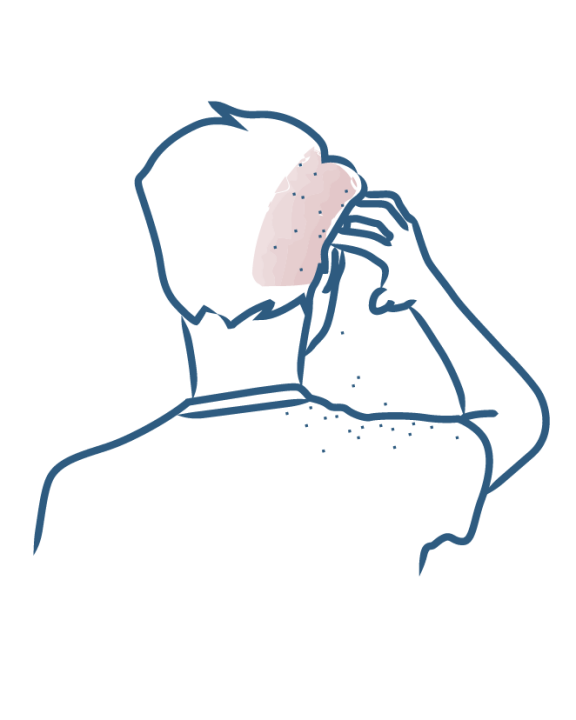What is dandruff?
Dry dandruff
Dry dandruff is very common, and is caused by accelerated desquamation associated with a dry scalp. How do you recognise it? How can you get rid of dry dandruff?
How do I recognise dry dandruff?
To establish the most appropriate treatment, it is important to determine whether you have dry dandruff or oily dandruff.
Dry dandruff is also called Pityriasis simplex, in other words it is a simple dandruff condition.
It is quite easy to distinguish from oily dandruff. Dry dandruff is the most common type of dandruff. It is small in size, light, white and appears on dry hair and scalps.
It is the most visible dandruff on clothes because it is volatile, and does not stick to hair. It is most commonly seen as flakes on shoulders. If in doubt, do not hesitate to ask your pharmacist or your doctor, they can help you to distinguish between them and establish the most appropriate treatment.
How do I treat dry dandruff?
What is dandruff? Dandruff is a phenomenon of accelerated desquamation of scalp cells. Dandruff is sometimes temporary and can disappear as quickly as it arrived. But when it persists, it is important to tackle it with an appropriate treatment to avoid weakening the scalp further and reduce its impact on everyday life.
Dry dandruff can be managed with a treatment shampoo containing one or more of the following active ingredients:
- A keratolytic active ingredient to promote the elimination of the dead cells that clump together.
- An antifungal active ingredient to fight the proliferation of certain yeasts (of the genus Malassezia) involved in the formation of dandruff.
- A moisturising active ingredient to treat a dry scalp combined with a gentle cleansing base with a physiological pH to avoid further irritating the already fragile scalp.
More information
Our care routines
Loose dandruff conditions, DS, pso
Dermatological expertise
To better understand your skin and hair, discover our exclusive content and innovative care products designed to improve your quality of life..

